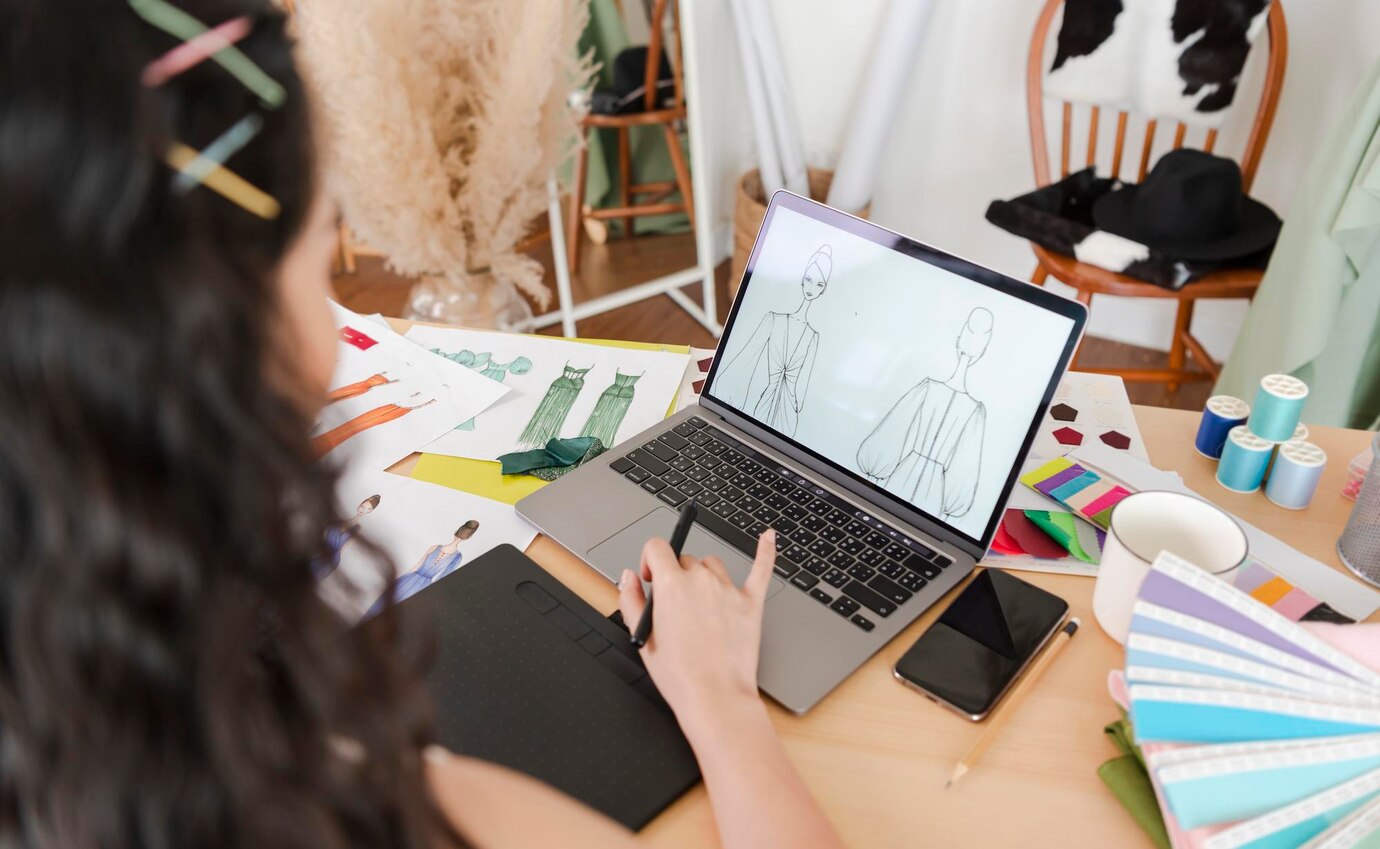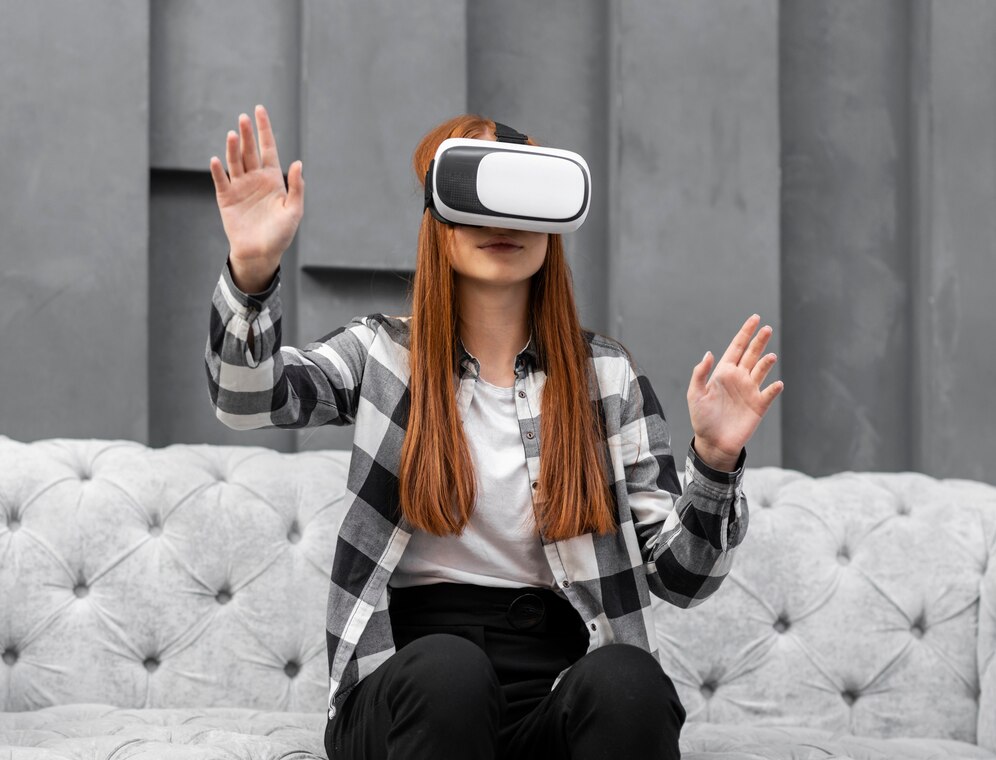The Rise of Digital Fashion & Virtual Clothing
The world of fashion is undergoing a revolutionary transformation. Technology is moving fast. As a result, digital fashion and virtual outfits are changing how people see and use clothing. The digital world is changing fashion. Innovations like NFT clothing and AR wardrobes are leading the way. Read our blog to learn more. What Is Digital

The world of fashion is undergoing a revolutionary transformation. Technology is moving fast. As a result, digital fashion and virtual outfits are changing how people see and use clothing. The digital world is changing fashion. Innovations like NFT clothing and AR wardrobes are leading the way. Read our blog to learn more.
What Is Digital Fashion?
Digital fashion is clothing that only exists online. It is made using 3D software, augmented reality, and blockchain technology. These outfits are different from traditional fashion. They aren’t made physically. Instead, they are worn virtually on digital platforms, gaming worlds, and metaverse.
The Evolution of Digital Clothing
Digital fashion started with online gaming. In these communities, players could dress their avatars in unique outfits. Recent tech advancements have made virtual garments popular beyond gaming. Today, luxury brands, influencers, and designers are using virtual outfits. This helps create a sustainable, inclusive, and innovative fashion world.
The Role of Virtual Outfits in Modern Fashion

Virtual outfits are redefining modern fashion, offering a sustainable, experimental, and boundary-pushing approach to self-expression. From digital runways to metaverse avatars, they allow for limitless creativity without the constraints of physical production.
Sustainability and Environmental Impact
One significant benefit of virtual outfits is how they help the environment. The traditional fashion industry dramatically harms the environment. It creates fabric waste, uses lots of water, and produces high carbon emissions. Digital fashion solves these problems. It cuts waste and lowers the carbon footprint because it doesn’t require physical production or shipping.
Moreover, producing digital garments requires fewer resources compared to traditional textile manufacturing. This change reduces toxic dye pollution, deforestation from fabric making, and high energy use. More brands focus on sustainability. Digital fashion is a great way to reduce fashion’s environmental impact.
The Influence of Social Media and AR
Celebrities and influencers are increasingly using virtual outfits to boost their online presence. Augmented reality (AR) technology lets users “wear” digital fashion in photos and videos, opening up a new way for self-expression. Platforms like Instagram and Snapchat support AR clothing filters, making these features more popular.
AR lets users try on clothes digitally before buying. This helps reduce online shopping returns, a big problem in e-commerce. This “try-before-you-buy” model could change fashion retail. It makes shopping more interactive and cuts costs for returns and exchanges.
Customisation and Personalisation
Digital fashion offers complete personalisation. Traditional fashion, on the other hand, depends on mass production. Users can create bespoke virtual outfits, allowing for limitless creative possibilities. DressX and The Fabricant provide exclusive digital collections, making customisation more straightforward.
Digital clothing lets consumers express themselves in ways that real clothes can’t. Blending various textures, colours, and styles allows users to create genuinely unique outfits that evolve in real time. This level of innovation fosters an entirely new way to experience and interact with fashion.
The Rise of the NFT Fashion Industry

The NFT fashion industry is revolutionising digital ownership, allowing users to buy, sell, and wear virtual clothing in the metaverse. Luxury brands and independent designers are embracing blockchain technology, creating exclusive, collectable fashion that merges creativity with digital innovation.
What Is NFT Fashion?
The NFT fashion industry mixes blockchain tech with digital design. This lets designers make unique, verified digital clothing items. NFTs (Non-Fungible Tokens) authenticate ownership of virtual outfits, ensuring exclusivity and originality.
How NFTs Are Revolutionising Fashion
- Ownership and Scarcity: Unlike traditional digital assets, NFTs show proof of ownership, making each item unique and collectable.
- Monetisation for Designers: Designers can sell their digital fashion pieces straight to buyers. This way, they don’t need intermediaries.
- Luxury Brands Collaborate: Big names like Gucci and Balenciaga are joining the NFT fashion scene and launching exclusive virtual outfits for the metaverse.
Virtual Runways and Metaverse Fashion
With the rise of the metaverse, virtual fashion shows are becoming increasingly popular. Metaverse Fashion Week lets designers freely showcase their digital fashion collections, opening new opportunities for global collaboration, inclusivity, and creativity.
Beyond virtual runways, digital fashion is expanding into various online ecosystems. Gamers can now buy NFT clothing for their avatars. In some virtual worlds, like Decentraland, users can also trade these digital outfits as assets. This change offers new chances for creators and consumers. Now, they can engage with fashion in exciting, immersive ways.
Challenges and Criticisms of Digital Fashion
Digital fashion faces challenges and criticisms, including concerns over accessibility, sustainability, and the loss of physical craftsmanship. While it offers innovation and inclusivity, questions about its real-world practicality and environmental impact in the digital space continue to spark debate.
Accessibility and Adoption
Despite its growing popularity, digital fashion still faces barriers to mass adoption. Many people don’t know about this idea, and the tech needed to enjoy virtual outfits hasn’t been shared yet. As augmented reality (AR) and virtual reality (VR) become popular, more people will use them.
Also, adding digital fashion to regular retail will need a lot of money for education and marketing. Brands should explain how virtual clothing helps consumers and fits with traditional fashion. Bridging the gap between physical and digital wardrobes is key. This makes digital fashion a lasting trend instead of just a passing novelty.
High Costs and Exclusivity
NFT fashion trends focus on exclusivity. However, high costs can push some consumers away. Luxury brands often sell digital garments with premium price tags, making them accessible only to a niche market.
As technology improves, production costs could go down. This may make virtual outfits more affordable for everyday consumers. Brands are trying out new pricing models. They offer high-end collectable NFTs and affordable virtual pieces to help them reach different audiences.
Ethical and Copyright Concerns
Digital fashion is on the rise. However, it raises concerns about intellectual property rights and digital counterfeiting. Designers need to understand copyright laws. This helps keep their work safe in a digital world.
Blockchain technology offers a potential solution by providing transparent and traceable ownership records. Designers can use smart contracts to receive secondary sales royalties, ensuring ongoing work compensation.
The Future of Digital Fashion

Digital fashion and virtual outfits will change the traditional fashion industry. This shift will happen as technology advances. The NFT fashion industry will grow fast, giving designers and consumers new ways to engage with clothing.
Key Predictions for the Digital Fashion Industry
- As these technologies improve, more brands will use AR and VR, which means digital fashion will be a more significant part of their marketing.
- Gaming and the Metaverse: The gaming industry drives virtual fashion—platforms like Roblox and Fortnite team up with fashion brands.
- Sustainable and Ethical Progress: Look for more sustainability improvements. Blockchain will help ensure ethical production and transparent supply chains.
- Hybrid Fashion Models: Brands can mix physical and digital fashion. This means clothing can have both a real and a virtual version.
- Mainstream Retail Integration: Big retailers might add digital clothing sections. This way, shoppers can buy virtual outfits along with real clothes.
The Digital Fashion Revolution: What Lies Ahead?
The rise of digital fashion and virtual outfits represents a paradigm shift in how people engage with clothing. Digital clothing is changing fashion today. It brings sustainability, personalisation, and innovation. The NFT fashion industry is growing. As it does, the line between physical and virtual style will blur. Digital wardrobes will become a standard part of the future.
The question is no longer if digital fashion will dominate but how soon it will become an integral part of our everyday lives. Virtual outfits are changing how we dress and express ourselves. With new technology and growing interest, they will reshape our fashion interactions.